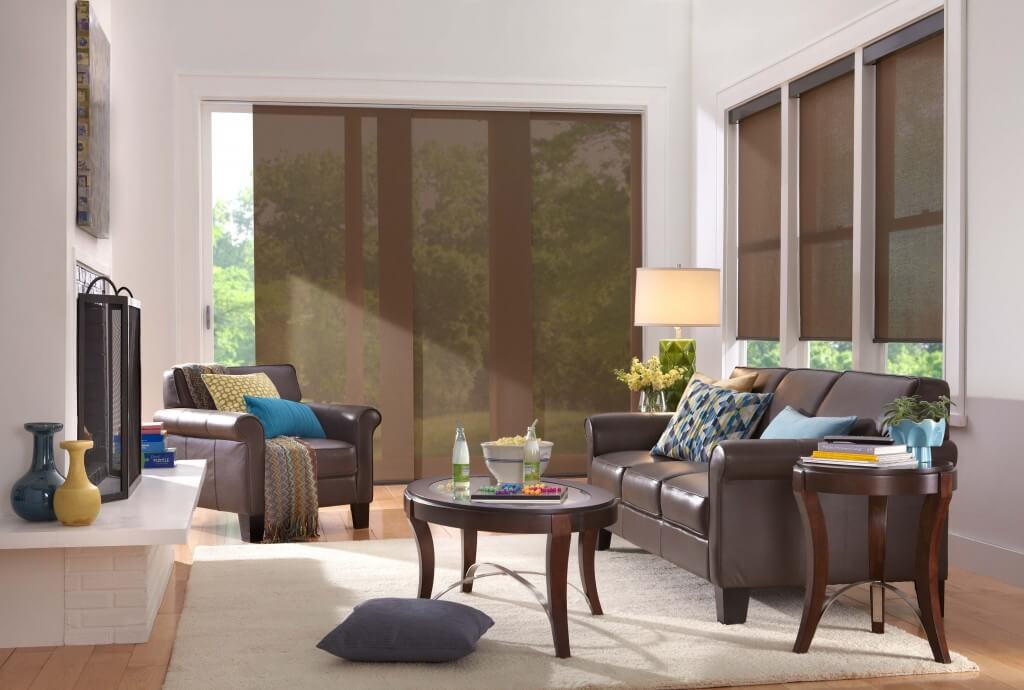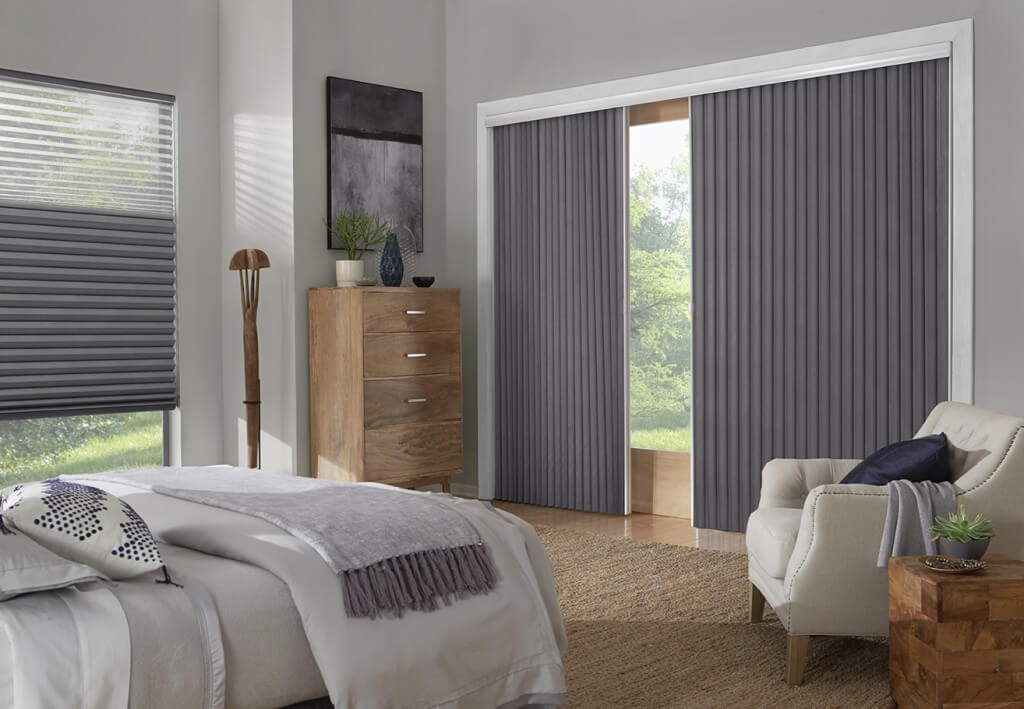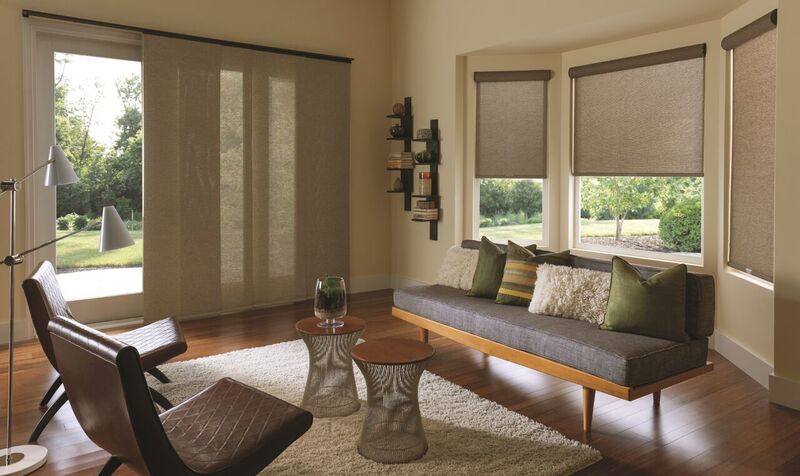When it comes to managing sunlight and privacy in your home, two popular options for window treatments are solar shades and cellular shades. Both provide useful sunlight control and energy efficiency benefits, but they differ in some important ways. Here’s an overview of how solar shades and cellular shades compare.
How They Work

Solar Shades
Solar shades, also known as sun shades, consist of a single sheer fabric panel that rolls up and down in front of the window. The open weave material allows some natural light in, while blocking glare and heat gain from direct sunlight. Solar shades come in light-filtering or room-darkening fabrics.
Cellular Shades
Cellular shades have a honeycomb-like structure made up of multiple fabric cells layered on top of each other. The cells trap air to create insulation against heat and cold. Cellular shades provide privacy and lighting control by adjusting how much of the shade is lowered. Depending on the opacity of the fabric, cellular shades can darken a room or filter light.
Sunlight Control and Privacy
Both shades effectively block UV rays and diffuse harsh sunlight. Solar shades generally provide less privacy than cellular shades. With solar shades, it’s still possible to see shapes and movement through the fabric when lowered, especially at night. Cellular shades obstruct the view when closed for full privacy.
Insulation and Energy Efficiency

The honeycomb cells in cellular shades create an insulated air pocket for thermal efficiency. Cellular shades help retain heated or cooled indoor air. Solar shades are less insulating. However, both options can contribute to energy savings by reducing the need for air conditioning, heating, and artificial lighting.
Design and Appearance
Solar shades have a streamlined, uncluttered look when raised since the fabric stacks neatly. Cellular shades maintain their structure when raised and lowered. The layered cells create a more textured aesthetic compared to the smoother surface of solar shades. Both come in a diverse array of colors and patterns.
Durability and Longevity
Solar shades are typically more durable and longer-lasting than cellular shades. The roller mechanism allows the fabric to be completely raised when not in use to prevent fading. Cellular shades are more prone to fabric discoloration and sagging over time. However, cellular shades hold their shape better than solar shades.
Costs
Solar shades are generally the more affordable option. The simpler design makes them relatively inexpensive to produce. Cellular shades require more materials and manufacturing precision, making them a pricier investment. However, cellular shades tend to provide greater value in terms of their superior insulation properties.
Here is a table comparing the key differences between solar shades and cellular shades:
Feature | Solar Shades | Cellular Shades |
Sunlight Control | Good: sheer fabric reduces glare and heat gain. | Excellent: opaque cells block UV rays and diffuse light. |
Insulation | Minimal: some air circulation | Excellent: cells trap air to resist heat flow. |
Privacy | Minimal: shapes visible through fabric | Excellent: block view when closed |
Durability | Excellent: completely raises out of light | Moderate: prone to fading and sagging |
Appearance | Streamlined and smooth | Textured and dimensional |
Cost | $ – more affordable | $$ – pricier but good value |
Energy Efficiency | Good: reduces sun heat gain | Excellent: insulated cells retain indoor climate |
Key Takeaways:
- Solar shades filter light through open weave fabric, while cellular shades use layered opaque cells to block light and views.
- Cellular shades provide more insulation and privacy, while solar shades offer durability and affordability.
- Both options promote energy efficiency by reducing heat gain and glare from sunlight.
- Solar shades have a smooth, uniform look when raised, while cellular shades maintain their structure.
Frequently Asked Questions about Solar Shades vs. Cellular Shades
Both shade types typically use brackets or clips to mount above the window frame or use adhesive strips for attachment directly to the frame, or wall. Cellular shades sometimes have side channels rather than clips for a sleek, built-in look.
Yes, both solar and cellular shades can integrate with smart home systems or be motorized with remote controls. This allows convenient control without having to raise or lower the shades manually.
Cellular blackout shades help darken kids’ rooms for nap time and nighttime sleeping. Both shades are durable and safe options for children. Adding cordless or motorized shades enhances child safety.
What’s the best window treatment for you?
Solar and cellular shades both make excellent choices for your home, depending on your needs. Carefully assess your needs in terms of style, efficiency, and budget to decide which option fits your windows best.
For personalized advice on choosing between solar and cellular shades, schedule a free in-home consultation with the experts at Made in the Shade—Eastern Shore. We have extensive knowledge of all the latest styles, features, and innovations when it comes to today’s solar shades and cellular shades. Let us bring our years of experience in the window treatment industry to provide you with the ideal shade solutions for your home. Call (240) 285-1457 or contact us online today to get started. Our friendly team looks forward to helping you control sunlight, increase privacy, and enhance your home’s ambiance with beautiful and functional solar or cellular shades.














